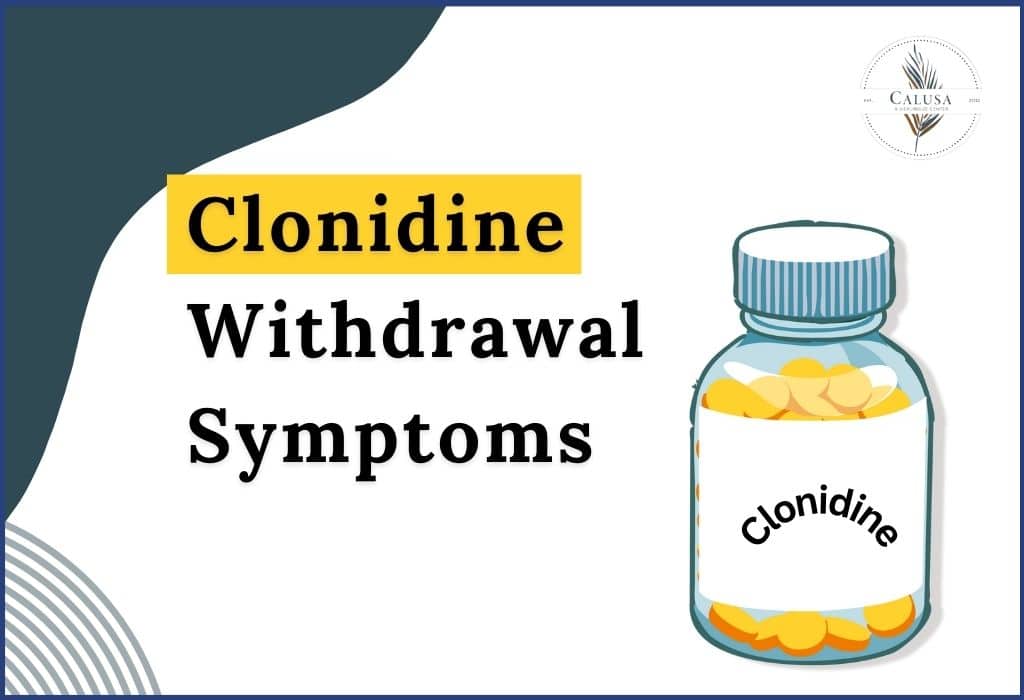Clonidine, a medication commonly prescribed for conditions like high blood pressure, ADHD, and anxiety disorders, can provide significant relief for many individuals. However, like many medications, abruptly stopping clonidine can lead to a range of uncomfortable and sometimes severe withdrawal symptoms. Whether you’re a healthcare professional assisting patients through withdrawal or someone personally navigating this journey, understanding the challenges and strategies involved is paramount.
In this blog, we’ll delve into the intricacies of clonidine withdrawal symptoms and provide valuable insights on how to manage them effectively. Let’s explore how to navigate the path to recovery with knowledge, support, and resilience.
Is clonidine withdrawal too much to handle?
Understanding Clonidine and Dependence
Clonidine is part of the alpha-2 adrenergic agonists group of medications. It works by stimulating specific receptors in the brain, leading to relaxation of blood vessels and a decrease in blood pressure. In addiction treatment, clonidine helps alleviate some of the most distressing withdrawal symptoms associated with opioids and alcohol, such as anxiety, sweating, and muscle aches. While clonidine is not addictive in the traditional sense, prolonged use can lead to dependence. Consequently, the body adjusts to clonidine’s presence and manifests clonidine withdrawal symptoms upon sudden discontinuance of the medication.Potential Withdrawal Symptoms of Clonidine
Influencing factors may encompass any coexisting medical conditions and whether a tapering schedule was employed before discontinuation. The severity and duration of clonidine withdrawal symptoms vary depending on several factors including:- The dosage and duration of clonidine use
- Individual differences in metabolism
- Whether clonidine is being used independently or in combination with other medications
-
Rebound Hypertension:
-
Nervousness and Anxiety:
-
Agitation:
-
Insomnia:
-
Flu-like Symptoms:
-
Headaches:
-
Nausea and Vomiting:
-
Tremors:
Timeline of Withdrawal Symptoms for Clonidine
Clonidine withdrawal symptoms can vary in their onset and duration, yet there is a general timeframe within which they typically occur. This timeframe provides a rough estimate of when individuals might expect to experience retreat symptoms after discontinuing clonidine.-
Within 1-2 days:
-
Days 2-7:
-
Weeks 2-4:
Managing Clonidine Withdrawal Symptoms
Fortunately, there are strategies to help manage clonidine withdrawal symptoms and ease the tapering process. Here are some helpful tips regarding the same:-
Taper gradually under medical supervision:
-
Lifestyle modifications:
-
Over-the-counter medications:
-
Support groups:
Seeking Professional Help During Withdrawal
While some individuals may manage mild clonidine withdrawal symptoms on their own, seeking professional medical help during the tapering process is highly recommended. Here’s why:-
Safe and supervised tapering:
-
Management of severe symptoms:
-
Underlying conditions:
Your Journey to a Brighter Tomorrow
Conclusion
Clonidine, a medication often prescribed for hypertension and other conditions, can lead to dependence with prolonged use, triggering clonidine withdrawal symptoms upon abrupt cessation. Managing these symptoms requires patience, support, and medical guidance. By gradually tapering the medication, addressing individual symptoms, and maintaining a supportive environment, you can navigate the withdrawal process more comfortably. Remember that everyone’s experience with withdrawal is unique, so be sure to communicate openly with your healthcare provider throughout the process.
For further details and assistance, reach out to our experts at Calusa Recovery or 866-939-6292. With the proper support and strategies in place, you can successfully navigate clonidine withdrawal and move towards improved health and well-being.
FAQ’s
Que: How do you taper off clonidine?
The procedure involves gradually reducing the dosage of clonidine administered to the patient daily until the dosage levels reach zero. The initial dosage level influences the anticipated duration of treatment, with higher dosages necessitating more steps to complete the tapering process.
Que: What is the drug of choice for clonidine withdrawal?
Given that labetalol is a robust antihypertensive medication and is adept at preventing potential hypertensive crises resulting from clonidine withdrawal, we suggest employing it as the preferred medication when discontinuing clonidine therapy is warranted.
Que: What is the most severe form of withdrawal?
Delirium tremens (DTs) represent one of the most severe outcomes of alcohol withdrawal, often arising following an extended period of heavy alcohol consumption. It predominantly affects individuals with a background of chronic alcohol abuse or those who have previously encountered severe alcohol withdrawal symptoms.










